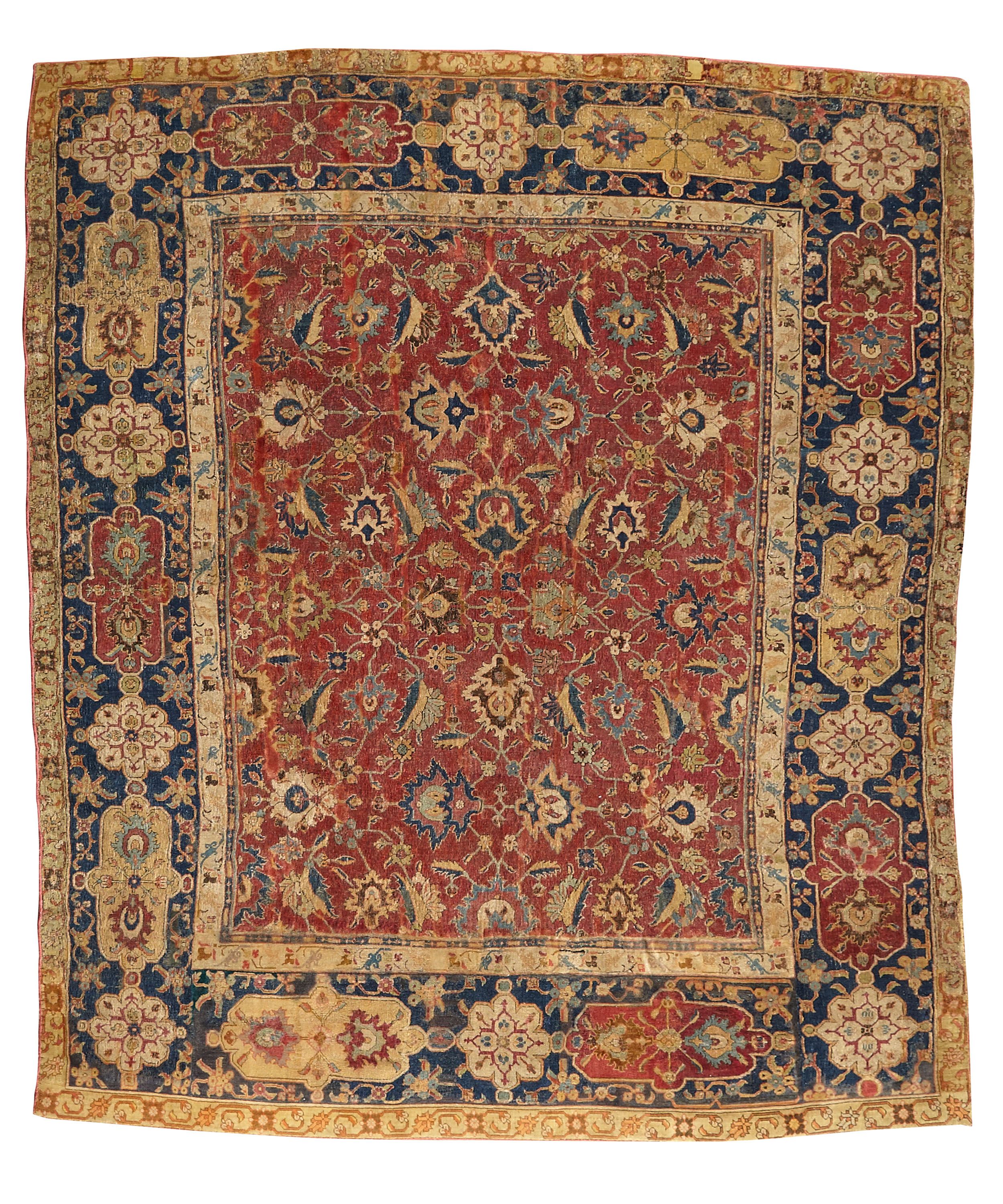We were delighted to offer a rare Safavid carpet with a unique story for auction in June 2014. International interest took the carpet to £79,250 including premium.

26 June 2014
Lyon & Turnbull
We were delighted to offer a rare Safavid carpet with a unique story for auction in June 2014. International interest took the carpet to £79,250 including premium.
The Holms Hepburn Coronation carpet is a Safavid period textile, probably woven in the royal city of Isfahan. Red ground carpets with the ‘in and out palmette’ design were first woven in the late 16th century, becoming more prevalent during the course of the 17th century, but being almost completely out of fashion by the end of that century. Recent studies indicate those woven with the saz leaf, such as this one, date from the 17th century. In the late 19th and early 20th centuries they were very much back in popularity when their jewel like qualities were prized by European families such as the Rothchilds, assiduously encouraged by the great art and antiques dealership Duveen Brothers, who in turn are recorded as the purchaser of most of those that came up for sale at auction at the time.

Duveen Brothers had been commissioned to provide tapestries and carpets for the coronation of Edward VII at Westminster Abbey in 1902. There are now known to have been three carpets used in the main part of the ceremony, including this one which sat underneath the throne upon which Edward VII was crowned. Of the other, much larger, two; one covered the steps to the dais. It is now in the Los Angeles County Museum, a gift of John Paul Getty in 1949. The other, which covered the dais, was most recently sold by Christie’s in London in 1997.
The present carpet was bought from Duveen Brothers the following year, 1903, by John Augustus Holms (1866-1938), a Glasgow stockbroker. The son of a weaver, he had made a fortune on the Glasgow Stock Exchange during the city's late-Victorian golden age. In 1903, Holms had begun buying farms to form into the estate he called Formakin. He commissioned the architect Sir Robert Lorimer to draw up plans for the house and started buying art and antiques for the future furnishing of it. Sadly, funds ran out and it was never completed. Even in the 1930s, he was giving dinner parties in his half-completed mansion, with tapestries concealing bare stone walls. During this time, it was loaned again for the coronation of George V in 1911 and the marriage of Princess Mary in 1922.
After his death in 1938, John Holms’ art collection, described by the Glasgow Herald as “one of the largest and most important brought together by a Scottish collector”, was catalogued and sold to pay his massive debts.
The carpet then came into the possession of Charles A Hepburn (1891-1971), who may have bought it from the sale. Hepburn, who had made his money from whisky blending, was also a great patron of the arts. His many gifts after his death included a collection of rare books at Glasgow University, as well as his home on University Avenue, which became the University’s History of Art Department.
This carpet was gifted by him to Glasgow Cathedral in 1971, where it has remained until now.